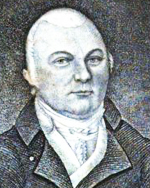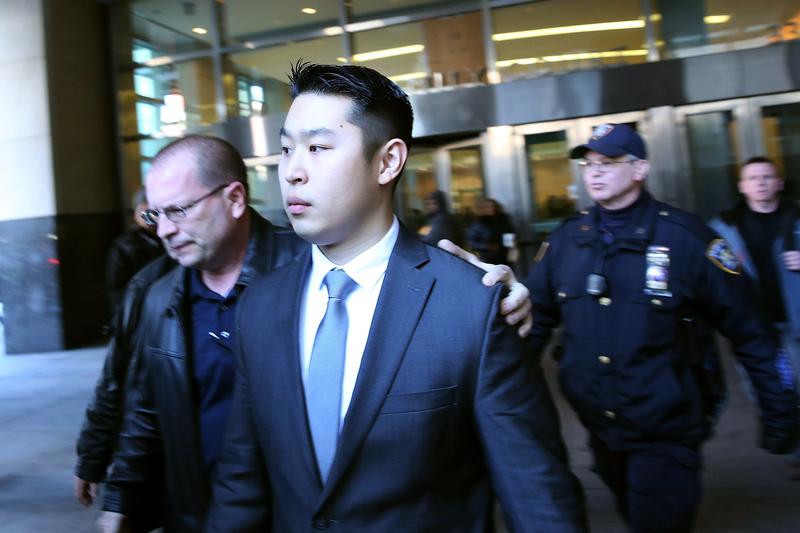“At the heart of it is the idea of the poem as an event in the life of the reader.” — Louise Rosenblatt
[Note: Get Out spoilers ahead.]
In the coming weeks, the blockbuster horror film Get Out (2017) is expected to garner multiple industry accolades, culminating with the Oscar nominations in late January. As part of the promotional campaign for Get Out, Vanity Fair recently created a video featuring writer and director Jordan Peele good-naturedly confirming and debunking over a dozen fan theories about his film, from the main plot being an extended dream sequence to the whole thing being a sequel to Being John Malkovich.
As an English professor, I usually applaud when students dwell on a story this much after finishing it. It’s the gold standard of teaching and learning in my field. Students brought an enthusiasm to our discussion of Get Out that simply wasn’t there for older works. Now, awards season promises to usher millions of uninitiated fans into conversations about the meanings of deer heads and Froot Loops.
This is too bad.
Don’t get me wrong – connecting the dots is a big part of what makes watching Get Out so fun. The problem isn’t with the act of interpretation itself but with what is being interpreted. The antiracist potential of Get Out doesn’t come from a viewer’s ability to decode the film as a product of Peele’s imagination. Rather, it comes from their willingness to see Get Out as an experience borne out of their own imagination – and the limits of it.
After Get Out was submitted for the “Best Motion Picture – Musical or Comedy” category at the Golden Globes, angry fans responded online, claiming that the decision invalidated their own experience with the film. Get Out could seem like a comedy, they argued, because Hollywood execs failed to see that systemic, intergenerational racism was itself a horror story. Even Peele (who had signed off on the decision) got into the act, tweeting “‘Get Out’ is a documentary.”
When teaching literature – and Get Out certainly falls into that category for me – I remind my students that they should pay attention not only to what the work is trying to do to them but to what they are trying to do to it. This job is harder than unraveling a metaphor because it requires us to be conscious of the assumptions behind our generosity and our fears. We stand to learn the most when interpreting literature as a personal experience and not a thing.
In the Vanity Fair video, one fan theorizes that the storyline of the Armitages as modern-day enslavers is only a product of Rod the TSA agent’s mind. “This is shown by the increasingly eccentric/unrealistic plot,” this fan postulates, which culminates in Rod’s unexpected heroics at the end. Peele admits to “loving” the theory but makes clear that all the horror elements “really happened.” The white people really were that bad, in other words.
Similarly, Allison Williams, who plays Rose Armitage, recently discussed on Late Night with Seth Meyers how fans she had met couldn’t accept that her character was as evil as she seems. Rose “literally is a white supremacist,” Williams insists. Yet fans maintained that Rose may have been “hypnotized” or was even “a victim” herself. “And I’m like, no! She’s just evil! How hard is that to accept? She’s bad!” Williams continues, adding “that it is 100% white people that say that to me.”
What state of mind leads fans – white fans in particular – to dream up such feverish theories about the characters and plot, willfully ignoring obvious cues all the while? When this happens, Get Out is clearly no longer the child of Peele’s imagination but that of the viewer’s.
In fairness, Get Out is often framed as an exciting mystery to be solved. The Vanity Fair video, the DVD director’s commentary, and our own friends and colleagues encourage us, above all, to hunt for hidden clues and motives. Rose stops the highway trooper from checking Chris’ ID to avert an official paper trail. Grandpa Walter wants a black body because he’s slower than Jesse Owens. Get Out, however, can offer much more than these simple pleasures of deduction.
Get Out has the potential to inspire viewers to interpret the experience that they created, not Peele. For example, they might consider how they came to give Rose the benefit of the doubt despite her obvious complicity. Or ponder why the party guests resembled only a rude coterie and not an intimidating mob. Or ask why they expected the black detective to tap the power of her institution to save Chris. The same viewers happily sorting themselves into Hogwarts houses are curiously absent from the world of Get Out.
Again, this approach to experiencing Get Out is much harder than reading Jordan Peele’s mind. This is because we must go outside of the film and into our own lives to find the associations we make when we watch it. We need to examine our own location in society to discover how we have been conditioned to assign meanings – and sometimes only one – to familiar sights. A young, attractive white woman. A black government worker. An auction. At its best, Get Out invites us to broaden our associations.
The good news is that we can. “What were your feelings at the end of the film when you thought the police had arrived?” I asked about a hundred students, over 90% of them white. Almost unanimously, they said they were afraid for Chris. “Why? The police were there. The system would work,” I said. They knew I was being facetious, but only some recognized how they were socialized into their worry for Chris. Five years ago, before Mike Brown and Sandra Bland, they might have been relieved for him.
As the buzz surrounding Get Out amplifies through the Oscars ceremony in March, media coverage will cohere around its importance as social commentary. Critics will remind us that the film is about what it feels like to be black in America. But what if white people and non-black people of color saw their responsibility as more than nodding knowingly at microaggressions or bits of cotton stuffing? What if they realized that Get Out can also be about what it feels like to be themselves in America?
Perhaps then they can decide that it isn’t such a great idea to take over the body of a black person after all, good intentions or not. They can see that for as long as there has been a Sunken Place for black people, there has also been a Sunken Place of their own. They can commit to experiencing Get Out – and every relationship beyond – as passengers in the bodies they already inhabit.
[Note: Get Out spoilers ahead.]
In the coming weeks, the blockbuster horror film Get Out (2017) is expected to garner multiple industry accolades, culminating with the Oscar nominations in late January. As part of the promotional campaign for Get Out, Vanity Fair recently created a video featuring writer and director Jordan Peele good-naturedly confirming and debunking over a dozen fan theories about his film, from the main plot being an extended dream sequence to the whole thing being a sequel to Being John Malkovich.
As an English professor, I usually applaud when students dwell on a story this much after finishing it. It’s the gold standard of teaching and learning in my field. Students brought an enthusiasm to our discussion of Get Out that simply wasn’t there for older works. Now, awards season promises to usher millions of uninitiated fans into conversations about the meanings of deer heads and Froot Loops.
This is too bad.
Don’t get me wrong – connecting the dots is a big part of what makes watching Get Out so fun. The problem isn’t with the act of interpretation itself but with what is being interpreted. The antiracist potential of Get Out doesn’t come from a viewer’s ability to decode the film as a product of Peele’s imagination. Rather, it comes from their willingness to see Get Out as an experience borne out of their own imagination – and the limits of it.
After Get Out was submitted for the “Best Motion Picture – Musical or Comedy” category at the Golden Globes, angry fans responded online, claiming that the decision invalidated their own experience with the film. Get Out could seem like a comedy, they argued, because Hollywood execs failed to see that systemic, intergenerational racism was itself a horror story. Even Peele (who had signed off on the decision) got into the act, tweeting “‘Get Out’ is a documentary.”
When teaching literature – and Get Out certainly falls into that category for me – I remind my students that they should pay attention not only to what the work is trying to do to them but to what they are trying to do to it. This job is harder than unraveling a metaphor because it requires us to be conscious of the assumptions behind our generosity and our fears. We stand to learn the most when interpreting literature as a personal experience and not a thing.
In the Vanity Fair video, one fan theorizes that the storyline of the Armitages as modern-day enslavers is only a product of Rod the TSA agent’s mind. “This is shown by the increasingly eccentric/unrealistic plot,” this fan postulates, which culminates in Rod’s unexpected heroics at the end. Peele admits to “loving” the theory but makes clear that all the horror elements “really happened.” The white people really were that bad, in other words.
Similarly, Allison Williams, who plays Rose Armitage, recently discussed on Late Night with Seth Meyers how fans she had met couldn’t accept that her character was as evil as she seems. Rose “literally is a white supremacist,” Williams insists. Yet fans maintained that Rose may have been “hypnotized” or was even “a victim” herself. “And I’m like, no! She’s just evil! How hard is that to accept? She’s bad!” Williams continues, adding “that it is 100% white people that say that to me.”
What state of mind leads fans – white fans in particular – to dream up such feverish theories about the characters and plot, willfully ignoring obvious cues all the while? When this happens, Get Out is clearly no longer the child of Peele’s imagination but that of the viewer’s.
In fairness, Get Out is often framed as an exciting mystery to be solved. The Vanity Fair video, the DVD director’s commentary, and our own friends and colleagues encourage us, above all, to hunt for hidden clues and motives. Rose stops the highway trooper from checking Chris’ ID to avert an official paper trail. Grandpa Walter wants a black body because he’s slower than Jesse Owens. Get Out, however, can offer much more than these simple pleasures of deduction.
Get Out has the potential to inspire viewers to interpret the experience that they created, not Peele. For example, they might consider how they came to give Rose the benefit of the doubt despite her obvious complicity. Or ponder why the party guests resembled only a rude coterie and not an intimidating mob. Or ask why they expected the black detective to tap the power of her institution to save Chris. The same viewers happily sorting themselves into Hogwarts houses are curiously absent from the world of Get Out.
Again, this approach to experiencing Get Out is much harder than reading Jordan Peele’s mind. This is because we must go outside of the film and into our own lives to find the associations we make when we watch it. We need to examine our own location in society to discover how we have been conditioned to assign meanings – and sometimes only one – to familiar sights. A young, attractive white woman. A black government worker. An auction. At its best, Get Out invites us to broaden our associations.
The good news is that we can. “What were your feelings at the end of the film when you thought the police had arrived?” I asked about a hundred students, over 90% of them white. Almost unanimously, they said they were afraid for Chris. “Why? The police were there. The system would work,” I said. They knew I was being facetious, but only some recognized how they were socialized into their worry for Chris. Five years ago, before Mike Brown and Sandra Bland, they might have been relieved for him.
As the buzz surrounding Get Out amplifies through the Oscars ceremony in March, media coverage will cohere around its importance as social commentary. Critics will remind us that the film is about what it feels like to be black in America. But what if white people and non-black people of color saw their responsibility as more than nodding knowingly at microaggressions or bits of cotton stuffing? What if they realized that Get Out can also be about what it feels like to be themselves in America?
Perhaps then they can decide that it isn’t such a great idea to take over the body of a black person after all, good intentions or not. They can see that for as long as there has been a Sunken Place for black people, there has also been a Sunken Place of their own. They can commit to experiencing Get Out – and every relationship beyond – as passengers in the bodies they already inhabit.











